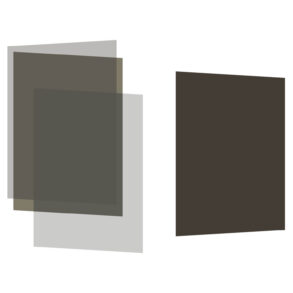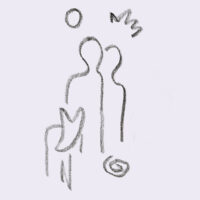Music has always been strongly connected with spirituality, but how has this changed in the era of electronic music? Is creative evolution happening, or has something been lost? Omer Eilam, a Berlin-based Israeli musician who studied at the Goetheanum in 2020, writes about his struggle with these questions and how he is listening to the “music of the spheres” today.
Last June, I visited Leipzig for the annual Bachfest, a festival celebrating the music of Johann Sebastian Bach. Being my third time at the festival, the experience has acquired the feeling of a pilgrimage, where music lovers from all over the world make their way to where the composer spent most of his adult life as he perfected his music to reach ever closer to the sublime. Sitting on an old wooden chair in the St. Thomas Church as the Thomanerchor—a boys’ choir that celebrated its 800th-anniversary last year—sings from the balcony like a choir of angels piercing through the heavens, one can feel the spirit of the composer pulsating underneath the tones. Coming from the future-oriented city of Berlin, I felt overjoyed to be able to partake in this rich tradition of music.
Between the concerts, I discussed with a friend the different functions and experiences of acoustic and electronic music. For the sake of simplicity, let us define the former as music that is produced with instruments (as well as the voice) and heard without any amplification, and the latter as any music made or experienced using electricity, such as synthesized music, music amplified through loudspeakers, or digital recordings of music. The point of departure for our conversation was my experience with individuals who have resistance towards electronic music, which, they told me, does not have the “etheric living forces” that live acoustic music has. My friend explained that these forces presumably exist in the physicality of the sounds, for example, in the vibrating vocal cords or the plucked strings of a guitar, and that we can train ourselves to penetrate through these physical phenomena and experience the spiritual reality that lies beyond them—the musical “tone-beings” and the relationships between them.
While no recording could reproduce the experience I had at the Bachfest, I believe that when listening to electronic music, the listener can rely on their inner forces and create a space of concentration from which they can ascend to the spirit. Far from being a futile attempt, some of my most profound musical experiences took place while listening to recordings and experiencing a very intimate relationship with the music and with the composer, almost like going back in time and meeting them in the spirit. A few years ago, when I was feeling low, I went to a local park and sat by the lake listening to the Funeral March from Beethoven’s Third Symphony. Closing my eyes, I saw a vision—a premonition of a burning world, fires engulfing all of nature, humans all but disappeared, and the music playing through my headphones could be heard everywhere, like a soundtrack to the end of the world. At that moment, I felt—I knew!—that dear Ludwig saw it too when he excruciatingly set those notes on paper. Like a time capsule, his music communicated this message to me in a moment of clarity amidst great distress.

First Encounters with Electronic Music
While growing up, I had many such deeply meaningful musical experiences, and yet it was only later in life that I decided to dedicate myself to the service of music. As a 28-year-old, I was pursuing a scientific career studying computational biology, and during my Ph.D., I became ever more frustrated with the reductionistic approach so common in the academic world. To enrich my daily life, I started attending a course on music in the 20th century, and for the first time, I discovered that the evolution of music did not stop with Beethoven or Coltrane, as some of my previous piano teachers had claimed, but that entirely new worlds of sound came into being at the turn of the century and especially after the Second World War. The latter was a time of great upheaval where composers wanted to completely dissociate themselves from any shred of the aesthetics that were associated with nationalism and the great atrocities of the war, and at the same time, to embrace new technologies for the synthesis, recording, and manipulation of sounds that opened up doors to new types of music. To quote Karlheinz Stockhausen, one of the leading figures in the post-war avant-garde: “New means change the method; new methods change the experience, and new experiences change man. Whenever we hear sounds, we are changed: we are no longer the same after hearing certain sounds, and this is more the case when we hear organized sounds, sounds organized by another human being: music.”
And so, while wrapping up my scientific career, I decided to move to The Netherlands and study electronic music at The Institute of Sonology in The Hague. During my studies, I came to realize that, unlike acoustic sounds, which originate from concrete objects in the material world, electronic or synthesized sounds have no inherent physicality. A pure sine tone—the simplest form of synthesized sound—does not exist in the entire kingdom of nature. If we try to follow a pure sine tone’s coming into being, we have to say that at first, it exists solely as an abstract idea, a hypothetical oscillation with a certain periodic speed, let us say 1,000 Hz (cycles per second.) This idea is then materialized using an electro-mechanical device—namely a loudspeaker—with a membrane that vibrates and moves the air around it back and forth 1,000 times per second, creating a sound wave that then meets our ears.
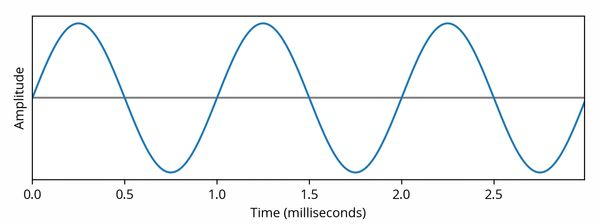
This process can be thought of as an inversion of the one described before; whereas in acoustic music, one needs to go through the material vibrations in order to experience music that is invisible, in electronic music, one starts from the invisible, from the realm of ideas, and then makes them concrete with the help of technological means. In other words, in acoustic music, the human being penetrates through the physicality of the sounds in order to ascend to the spirit, while in electronic music, the human being reaches for abstract tones in the spiritual world and “pulls them down” into the physical plane.1
The Art of Listening
This process of reaching up to spiritual planes in search of a new kind of music and then making it concrete has been guiding me through the composition of my piece, Solar System Meditation. Its origin lies in a vision of resounding objects circulating in space, their nature determined by their movement. My starting point was the movement of the planets around the sun: their distance, their speed, their angle, etc. These parameters were then used to guide the curation of the sounds where, put simply, each planet has a corresponding single continually evolving sound with a unique frequency and spatial movement. Using dedicated software, these spatial trajectories can be simulated in sound and rendered in a multichannel audio format that conforms to any given loudspeaker arrangement. In a concert setting, listeners would find themselves seated at the heart of the hall, akin to the sun’s central position, surrounded by celestial melodies and rhythms, as if the planets themselves were orbiting around them. By harnessing technology, a connection with the pure reality and precise mathematics of the heavens is achieved, a feat that acoustic instruments can only partially emulate. And so, what started as an abstract idea was gradually made flesh and turned into music.
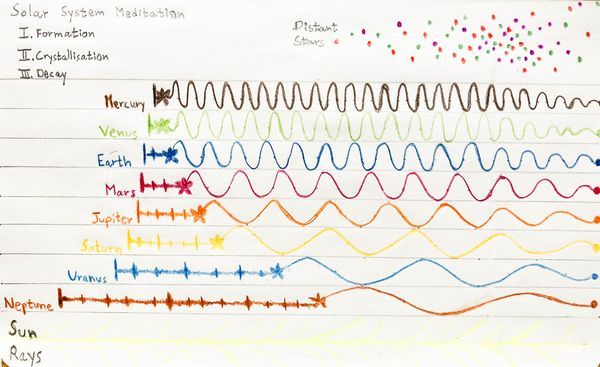
However, one need not be a composer in order to experience such a meaningful connection with music. Through concentrated active listening, we can develop a relationship with sounds—be it musical ones or those that surround us in everyday life—and feel their rhythms pulsate and come to life in our own bodies. We can sense these rhythms in the transitions between each inhalation and exhalation, in the widening and contraction of the blood vessels, in the tension and release of the skeletal muscles, in the movements of the bowel, and in the electrical flow of the nervous system. Instead of a pastime activity, listening itself can become an art form and a spiritual activity.
Naturally, such an activity can not be undertaken with every type of music, and one must actively look for pieces of music that were constructed as bridges to the spiritual world. To conjure Stockhausen again, “VISION”, the last scene in his opera Donnerstag aus LICHT, recounts the experiences of the archangel Michael as he descended to earth to live as a human being (thus doubling as a Christ-like figure). Michael is depicted as a trinity of singer, trumpeter, and dancer and is accompanied by a synthesizer in music that brings the acoustic (physical) and electronic (cosmic) worlds into contact with one another. In the penultimate stanza, Michael proclaims his mission on Earth:
I became Man
to bring celestial music to humans
and human music to celestial beings,
so that Man may listen to God
and God may hear his children.
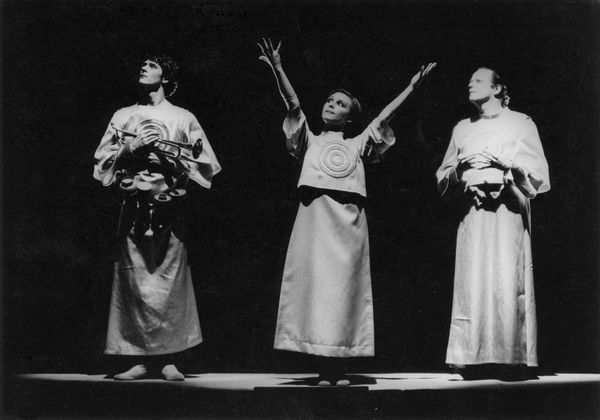
Photograph: Lelli & Masotti, Archivio Fotografico Teatro alla Scala di Milano.
And so, revisiting the aforementioned resistance to electronic music, perhaps the question is not, “Is electronic music healthy and spiritual?” but rather, “How can we spiritualize electronic music?” Our brief excursion into music history shows us that electronic music is still a rather new impulse in humanity’s creative endeavor, which is struggling to find its rightful place in our collective consciousness. To become active participants in this process, as we engage with music in our daily lives, we can think of listening itself as an art form whereby, through attentive concentration and love, we can both spiritualize the earthly and embody the cosmic. Recalling the image of the three Michaels from “VISION”, we should be able to ask ourselves the question: “Can we develop our musical sensitivity to such a degree that we become Michael’s messengers on Earth?”
More Omer Eilam
More VISION
Listen to Solar System Meditation
Footnotes
- One can think of a similar duality when comparing the process of composition to the process of listening; i.e., going from the concrete to the abstract is more related to the process of listening while going from the abstract to the concrete belongs more to composing, and that is regardless of whether the music is electronic or acoustic. But this dichotomy is not hard and fast, and one can sense the two processes happening simultaneously in electronic and acoustic music, in listening and in composing.





